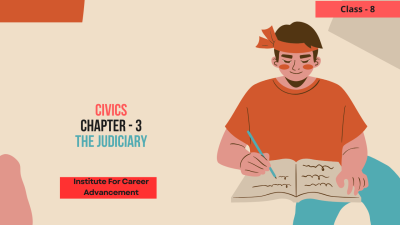Electoral Politics - Class 9
Electoral Politics is the study of the process by which governments are chosen and held accountable. It involves the election of representatives to legislative bodies, the selection of executives, and the organization of referendums. Key aspects of electoral politics include: Voting systems: Different methods used to elect representatives, such as plurality, majority, and proportional representation. Political parties: Organized groups that aim to influence government policy and win elections. Electoral campaigns: The strategies and tactics used by candidates and parties to win elections. Voter behavior: The factors that influence how people vote, such as party affiliation, ideology, and economic conditions. Election administration: The organization and management of elections, including voter registration, polling places, and counting ballots. Understanding electoral politics is essential for citizens to participate effectively in democracy and hold their governments accountable. নির্বাচনী রাজনীতি হল সেই প্রক্রিয়াটির অধ্যয়ন যার মাধ্যমে সরকারগুলি নির্বাচিত হয় এবং জবাবদিহি করা হয়। এর মধ্যে রয়েছে আইন প্রণয়নকারী সংস্থাগুলিতে প্রতিনিধিদের নির্বাচন, নির্বাহীদের নির্বাচন এবং গণভোটের সংগঠন। নির্বাচনী রাজনীতির মূল দিকগুলির মধ্যে রয়েছেঃ ভোটদান পদ্ধতিঃ প্রতিনিধি নির্বাচনের জন্য ব্যবহৃত বিভিন্ন পদ্ধতি, যেমন বহুত্ব, সংখ্যাগরিষ্ঠতা এবং আনুপাতিক প্রতিনিধিত্ব। রাজনৈতিক দলঃ এমন সংগঠিত দল যাদের লক্ষ্য সরকারি নীতিকে প্রভাবিত করা এবং নির্বাচনে জয়লাভ করা। নির্বাচনী প্রচারঃ নির্বাচনে জয়ী হওয়ার জন্য প্রার্থী ও দলগুলির দ্বারা ব্যবহৃত কৌশল ও কৌশল। ভোটার আচরণঃ যে কারণগুলি মানুষ কীভাবে ভোট দেয় তা প্রভাবিত করে, যেমন দলের অনুমোদন, মতাদর্শ এবং অর্থনৈতিক অবস্থা। নির্বাচন প্রশাসনঃ ভোটার নিবন্ধন, ভোটকেন্দ্র এবং ব্যালট গণনা সহ নির্বাচনের সংগঠন ও পরিচালনা। গণতন্ত্রে কার্যকরভাবে অংশগ্রহণ করতে এবং তাদের সরকারকে জবাবদিহি করতে নাগরিকদের জন্য নির্বাচনী রাজনীতি বোঝা অপরিহার্য।
English
Last updated
Wed, 27-Nov-2024



















